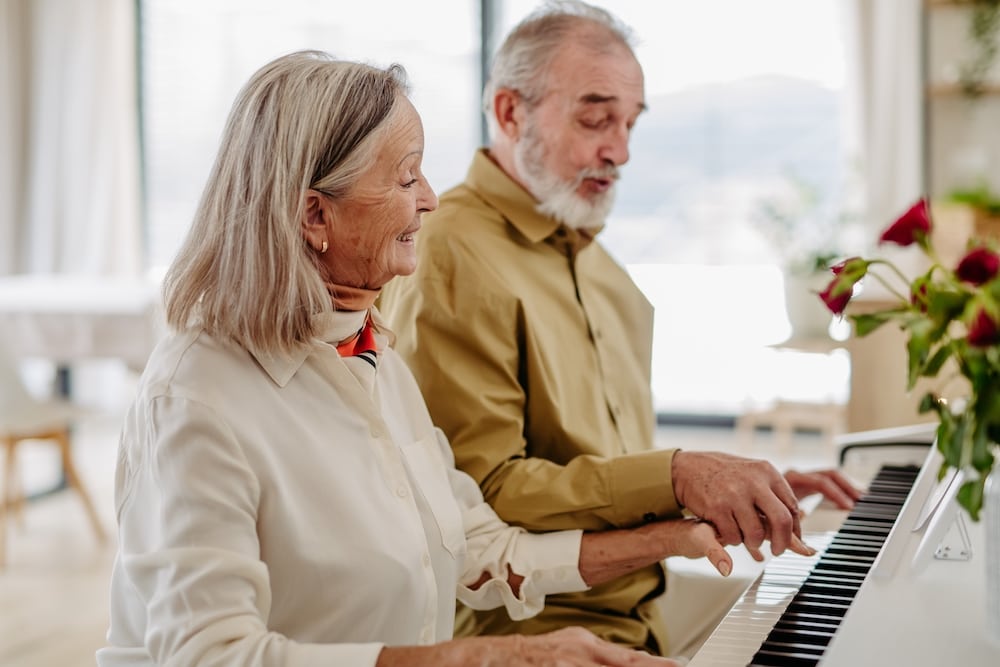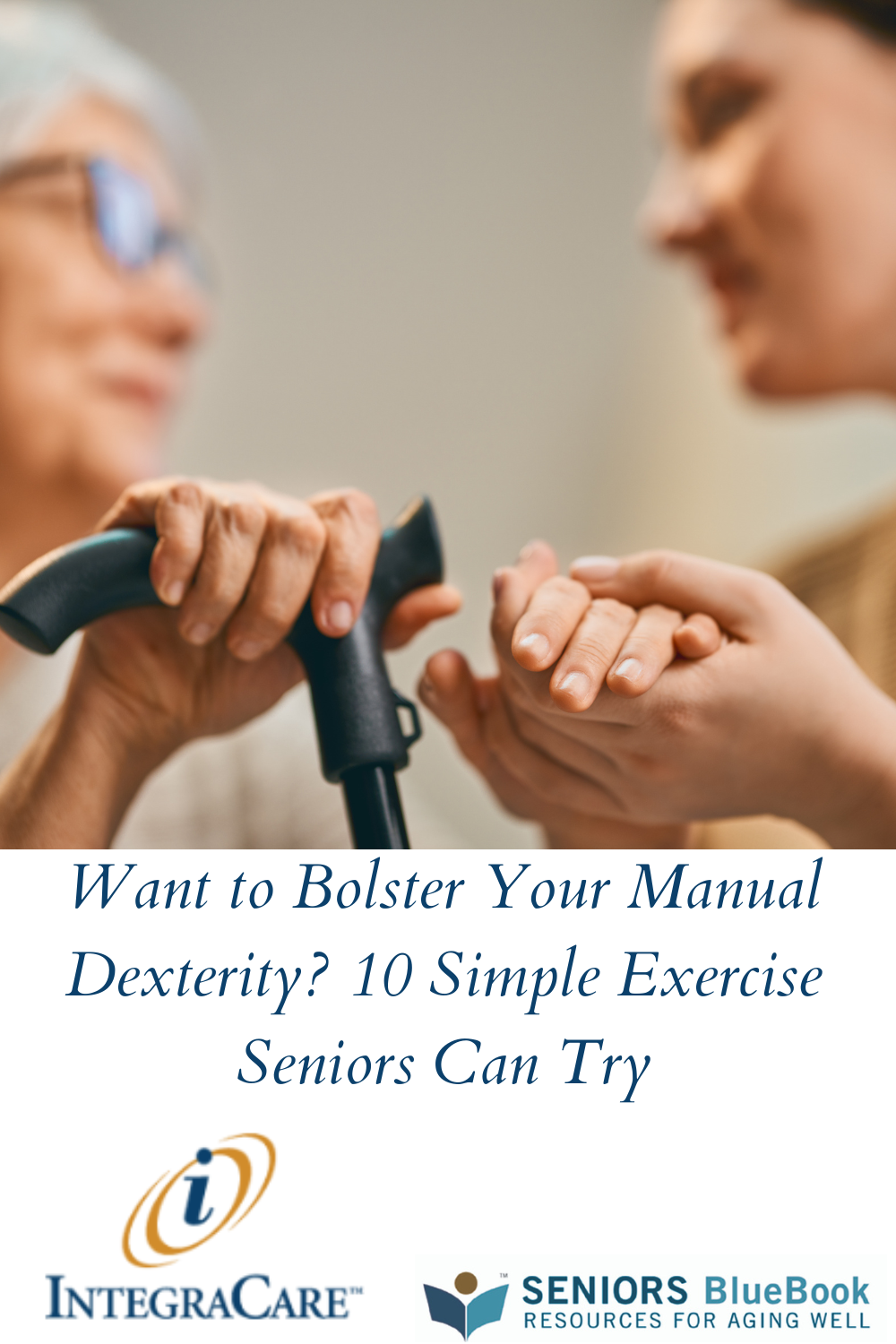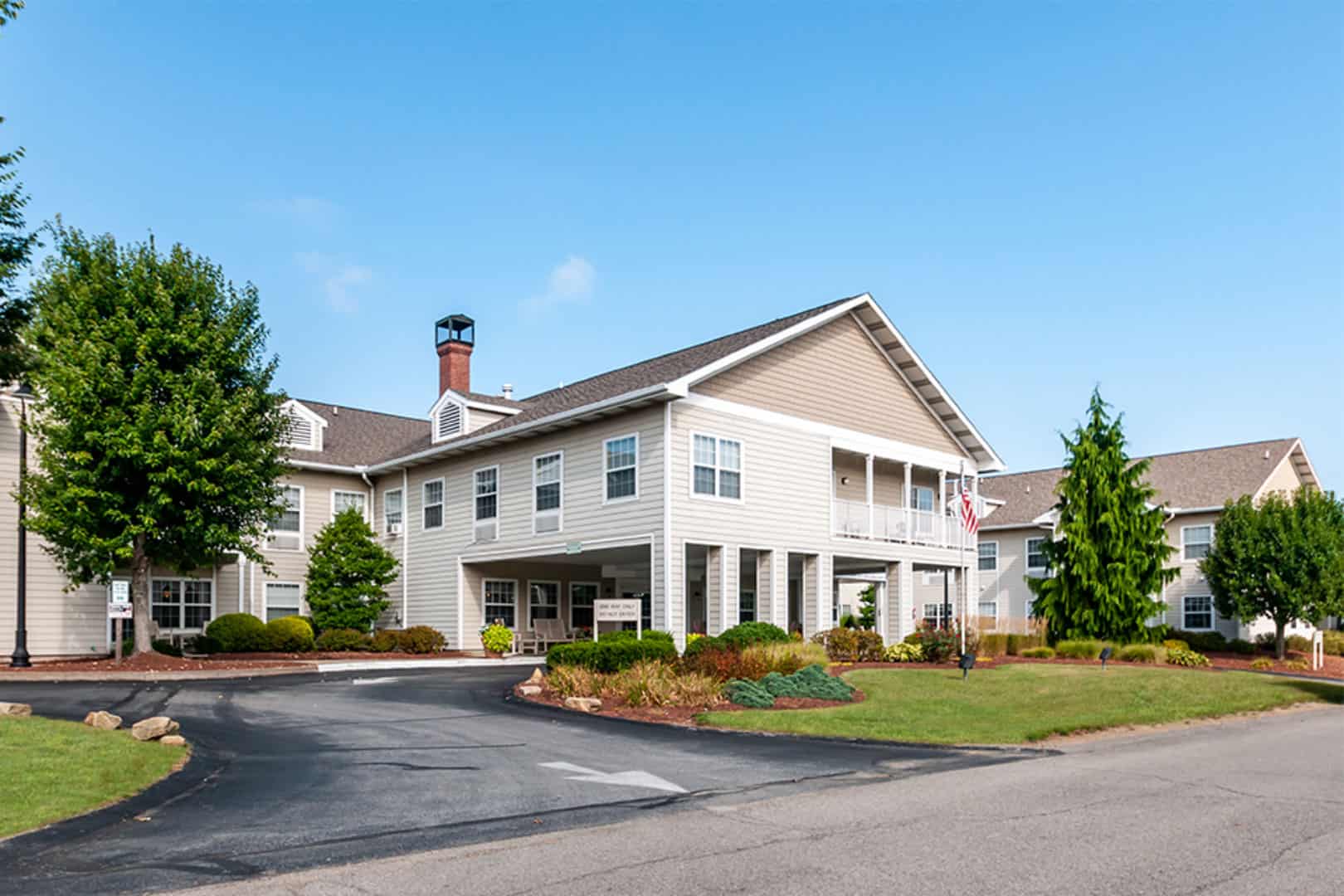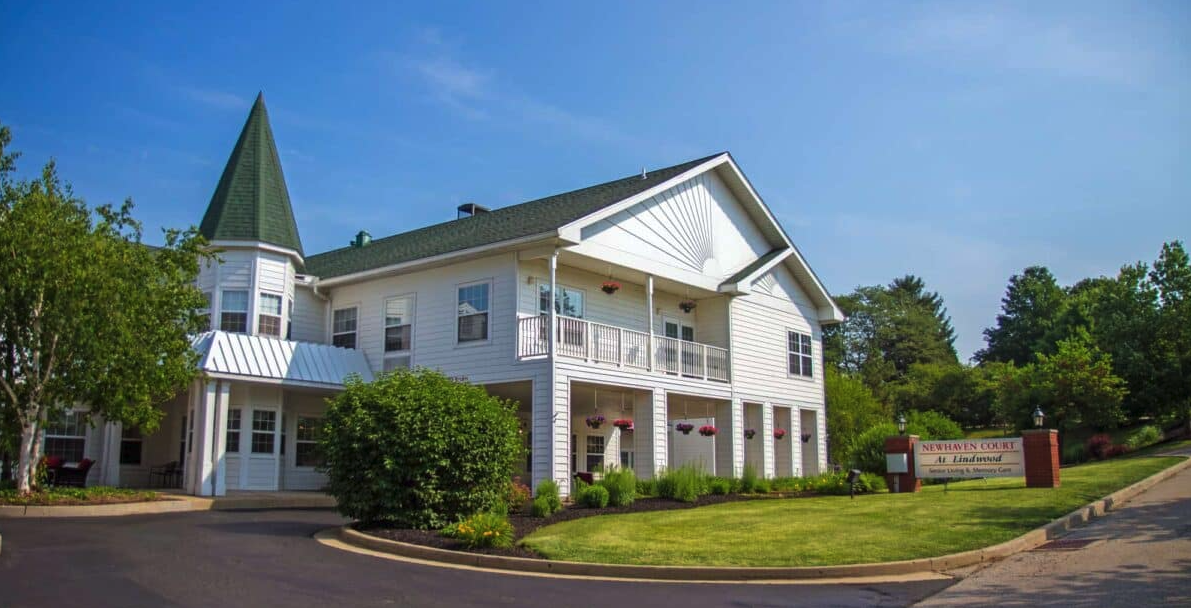Want to Bolster Your Manual Dexterity? 10 Simple Exercise Seniors Can Try
Jul 13, 2024
Pennsylvania - Greater Pittsburgh Area
With the golden hues of age come the challenges of maintaining our physical agility – particularly, our manual dexterity. Aging can pose hurdles to our ability to grasp a pen, navigate a smartphone, or effortlessly button up a shirt. But guess what? It’s never too late to learn, to grow, to conquer. At IntegraCare, we live by this philosophy. In this spirit, we’re thrilled to share ten simple, engaging exercises that you, or your loved ones, can try out to strengthen manual dexterity. So, let’s jump right in!
Decoding the Puzzle: What is Manual Dexterity?
Hang on a minute. Before we embark on our list of exercises, let’s decipher what manual dexterity actually is. Well, it’s the ability to coordinate our hands and fingers with precision and control. It’s a complex blend of strength, nimbleness, and finesse. Aging can lead to a decrease in these abilities, thanks to factors such as muscle atrophy, arthritis, or neurological conditions like Parkinson’s disease.
The importance of manual dexterity extends beyond physicality, seeping into the corners of our everyday lives. It means staying independent, comfortably performing day-to-day tasks, and keeping our hobbies alive. Interestingly, maintaining finger and hand dexterity can also keep our minds active – after all, many manual tasks also stimulate our gray cells.
Mindfulness and Manual Dexterity:
Though it may sound surprising, the path to improving manual dexterity also involves a healthy dose of mindfulness. What is mindfulness, you ask? It’s the practice of being fully present and engaged in what we’re doing at the moment, not overly reactive or overwhelmed by what’s going on around us.
In the context of improving manual dexterity, mindfulness translates to being fully attentive during the exercises, consciously focusing on the movement and coordination of our hands and fingers. This deliberate attention not only optimizes the effectiveness of the exercises but also turns them into a form of meditative practice. This can bring about a sense of tranquility and centeredness in our lives, enriching our physical and mental wellbeing.
Top 10 Exercises: Simple, Effective, and Fun
Now that we’ve dissected the why, let’s move on to the how. Here’s our handpicked selection of exercises to help boost your manual dexterity:
Finger Lifts:
A simple exercise to start. Place your hand flat on a table. Try to lift each finger, one by one, while keeping the rest immobile. This exercise works wonders for the independence of your finger movements.
Grip Strengthening:
Got a stress ball or a grip strengthener lying around? Pick it up, and squeeze away! This move is brilliant for fortifying your hand muscles.
Finger Touches:
Start by touching your thumb to your index finger. Next, touch it to your middle finger. Continue until you’ve made a circle with each finger. This small exercise can improve hand coordination and dexterity significantly.
Wrist Actions:
Here’s another one – rest your arm on a table, let your hand hang over the edge, palm down. Now, slowly lift and lower your hand, moving only at the wrist. You can even add a small weight for resistance as your strength picks up.
Towel Wringing:
Lay a hand towel flat on a table. Using just one hand, crumple it into a ball. This is fantastic for fine-tuning motor skills.
Playdough Manipulation:
Who knew playing with playdough or therapeutic putty could be so beneficial? It’s all about molding, shaping, rolling, and flattening – a creative way to engage various muscle groups in your hand.
Coin Shifting:
Scatter a few coins on a table. Pick up each one and move it from one side to the other. This exercise is great for refining your pincer grasp.
Puzzle Piecing:
Jigsaw puzzles are not only a fun pastime but also a stellar way to improve hand-eye coordination and stimulate your mind.
Shuffling Cards:
No need to be a Vegas dealer to shuffle a deck of cards. Even slow, deliberate movements can significantly improve finger dexterity.
Tickling the Ivories:
Whether it’s on a real piano or a virtual one on your tablet, playing piano tunes is an entertaining way to work on finger independence and coordination.

A Social Spin: Fun Group Activities for Dexterity
Exercises can sometimes feel monotonous or solitary. But who said improving manual dexterity can’t be a social affair? Here at IntegraCare, we believe in the magic of community and camaraderie. That’s why we encourage group activities that can double as dexterity exercises.
Consider engaging in a group art project that involves painting, sculpting, or pottery. Even cooking classes can offer a fun way to work on your manual skills while creating something delicious! Besides being excellent for improving dexterity, these activities also provide an opportunity for social interaction, making the journey more enjoyable and fulfilling.
The IntegraCare Advantage
At IntegraCare, we understand that everyone’s journey with age is unique. We strive to provide personalized support that caters to individual needs and preferences. Our communities are equipped with state-of-the-art facilities and compassionate, highly trained staff who are always there to lend a hand, whether it’s to guide you through these exercises or to support you in your daily activities.
At the heart of everything we do at IntegraCare is a commitment to enhance the quality of life of our residents. Whether it’s through fostering manual dexterity, mental agility, or simply providing a nurturing and engaging environment, we are here for you every step of the way.
A Few Last Words
Persistence and patience are the name of the game here. Keep these exercises in your daily routine, start slow, and gradually intensify your efforts.
Here at IntegraCare, we’re not just a senior living community; we’re a part of your life’s journey. We’re here to support, encourage, and inspire, whether you’re considering senior living for yourself or a loved one.
Remember, age is just a numerical side note, not a barrier to living life to its fullest. With these exercises, we hope you’ll discover newfound strength and independence in your daily life. Manual dexterity may seem like a small thing, but it can profoundly impact the quality of life you desire and deserve.
Ready to give your manual dexterity a boost? Let’s dive in! As the saying goes, the journey of a thousand miles begins with a single step – or in this case, a single finger lift. Life is an adventure. Let’s explore it together, one day, one step, one squeeze, one touch at a time. After all, it’s the little things that make life grand. Happy exercising!
- To view the original version of this article visit www.integracare.com/want-to-bolster-your-manual-dexterity-10-simple-exercise-seniors-can-try/
- Seniors Blue Book was not involved in the creation of this content.
Other Articles You May Like
How Meal Preparation Can Help Seniors Live Healthier, Happier Lives
As we grow older, many daily activities that were once simple can become more difficult, including preparing healthy meals. For seniors, proper nutrition is essential to maintain energy, supporting the immune system, managing chronic conditions, and staying independent. Thats why meal preparation isnt just a convenience, its a lifeline.Key Benefits of Meal Preparation for Seniors1. Ensures Balanced, Nutritious MealsHaving meals prepared in advance ensures that seniors are eating regularly and get the essential nutrients their bodies need. It prevents reliance on unhealthy processed foods or skipping meals altogether.2. Supports Chronic Condition ManagementMany seniors live with conditions like diabetes, high blood pressure, or heart disease. Proper meal planning allows for dietary restrictions to be met, helping control symptoms and reduce complications.3. Reduces the Risk of MalnutritionMalnutrition is a silent threat among older adults, especially those living alone. Meal preparation helps safeguard against this by promoting consistent, nourishing eating habits.4. Promotes Independence and DignitySeniors who struggle with cooking may feel frustrated or dependent. Having meals planned and readywhether through caregiver support or meal delivery servicesallows them to eat well without feeling like a burden.5. Encourages Social EngagementWhen meal prep includes shared cooking or mealtimes, it creates opportunities for connection. Eating with a companion improves mood, reduces loneliness, and often encourages better eating habits.6. Saves Energy and Prevents AccidentsShopping, standing at the stove, lifting pots, or cutting ingredients can be physically taxing and even dangerous. Meal preparation helps minimize fatigue and reduces the risk of falls or burns in the kitchen. Meal Preparation OptionsThere are several ways to incorporate meal prep into a seniors routine: Family or caregiver assistance for shopping, cooking, and portioning meals Meal delivery services that offer senior-friendly, diet-conscious options Community programs such as Meals on Wheels Group cooking sessions at senior centers that combine nutrition with social interaction Freezer meal prepping once a week or month to ensure ready-made meals are always available Meal preparation is about more than just food, its about health, safety, and quality of life. For seniors, having access to nutritious, well-planned meals means more energy, better health, fewer hospital visits, and the ability to stay independent longer.
Why Are Seniors at Greater Risk for Falls?
As we age, our bodies and minds go through a variety of changes, many of which can increase the likelihood of falling. For older adults, falls are not just a minor mishap; they can lead to serious injuries, loss of independence, and a lower quality of life. Understanding why seniors are more vulnerable to falls is the first step in creating safer environments and developing effective prevention strategies.The Aging Body and Increased Fall RiskSeveral age-related factors contribute to an increased risk of falls among seniors. These include physical, sensory, and cognitive changes that often occur gradually but can have a significant impact.1. Decreased Muscle Strength and FlexibilityWith age, muscles naturally weaken, and joints may become stiffer. This can reduce balance, coordination, and reaction time, making it harder to prevent a fall when tripping or slipping.2. Poor Balance and Gait ChangesChanges in the way a person walksoften due to arthritis, neurological conditions, or previous injuriescan lead to an unsteady gait. Seniors may shuffle their feet, walk slower, or have trouble lifting their legs, all of which increase fall risk.3. Vision DeclineVision plays a critical role in balance and spatial awareness. Conditions like glaucoma, cataracts, or macular degeneration make it difficult to judge distances, see steps clearly, or identify hazards in dim lighting.4. Hearing LossHearing is connected to balance. Inner ear problems or age-related hearing loss can lead to vertigo or dizziness, making it harder for seniors to stay upright.5. Chronic Health ConditionsMany seniors live with chronic diseases such as: Diabetes (which can cause nerve damage and numbness in the feet) Heart disease (leading to dizziness or fatigue) Parkinsons disease or Alzheimers (affecting movement, memory, and decision-making) These conditions can impair coordination and increase confusion, both of which heighten fall risk.6. Medication Side EffectsOlder adults often take multiple medications, which can interact and cause side effects such as dizziness, low blood pressure, drowsiness, or blurred visionall potential contributors to falls.7. Cognitive ImpairmentSeniors with dementia or other cognitive disorders may have poor judgment, forget to use walkers or canes, or become disoriented, all of which increase their chances of falling.8. Low Physical Activity LevelsWhen seniors become less active, muscles weaken and balance deteriorates. A sedentary lifestyle can quickly lead to frailty, making even routine movements more hazardous. What Can Be Done?Awareness is the first step. By understanding why seniors are more prone to falls, families, caregivers, and seniors themselves can take proactive steps such as: Regular balance and strength exercises Home safety modifications Routine vision and hearing checks Medication reviews with a doctor Use of mobility aids as needed Falling doesnt have to be a normal part of aging. By recognizing the reasons behind increased fall risk in seniors, we can create supportive environments that promote confidence, mobility, and independence. With the right strategies in place, seniors can continue living full, active, and safe.
The Benefits of Personal Care Companionship for Seniors
Personal care companionship is more than just help around the houseits a relationship built on trust, kindness, and presence. For many seniors, its the key to aging with dignity, maintaining meaningful connections, and continuing to live life on their own terms. Here are some of the benefits of hiring a personal care company. Enhanced Emotional Well-beingLoneliness and isolation are major issues for many older adults. A companion provides regular interaction and someone to talk to, helping reduce feelings of sadness, anxiety, and depression. Having a trusted person who genuinely listens and engages in meaningful conversations can uplift spirits and provide a much-needed emotional boost.Improved Safety and SupportCompanions assist with mobility and can help prevent falls and ensure that daily routineslike taking medication or preparing mealsare done safely. This added layer of attention is especially beneficial for individuals with mild cognitive decline or physical limitations.Maintained IndependenceSeniors often want to remain in their own homes as long as possible. Personal care companionship supports this goal by providing help without taking away a sense of control. Companions encourage independence while offering just enough support to make life easier and more manageable.Family Peace of MindKnowing a loved one is not alone and being cared for by a compassionate companion brings enormous relief to family members. It allows families to focus on enjoying their time together rather than worrying about day-to-day tasks or safety concerns.Encouragement of Healthy HabitsA companion can motivate seniors to stay active, eat well, attend medical appointments, and keep up with social or spiritual activities. This consistent encouragement helps promote physical and mental health over time.Cognitive Stimulation Through games, conversation, reading, and storytelling, companions help keep the mind engaged. This can be especially helpful for seniors living with early signs of dementia, as routine mental stimulation has been shown to slow cognitive decline.
Local Services By This Author
Newhaven Court at Clearview
Memory Care 100 Newhaven Lane, Butler, Pennsylvania, 16001Butler's picturesque setting is the perfect surrounding to Newhaven Court at Clearview's charming grounds. Our Senior Living community offers 24/7 Personal Care and Memory Care.Live, love and laugh with us at Newhaven Court at Clearview!Guests are welcomed with a reception area furnished with our own grand piano! There are inviting spaces for friends and family to gather, like our sunroom with pastel accents and modern hardwood floors, our library with elegant features including a cozy fireplace, and our finch aviary where residents love to bird watch.The Memory Care Program at Newhaven Court at Clearview, for your loved one.Our memory care program offers a safe, warm, inviting, and dignified environment for seniors living with memory impairments. Our expert staff provides care and activities conducive to emotional, spiritual, and social satisfaction. Your loved one will receive compassionate care in a relaxing environment complete with beautiful landscaping and cozy areas for enjoying with family and friends.Our philosophy is to create an environment that facilitates a sense of belonging.Provide opportunities for meaningful activities that improve quality of lifeFocus on remaining skills and abilities, enhancing them where possibleSupport positive behaviors and reduce risk of incidents from challenging behaviorOffer experiences for both verbal and non-verbal communicationProvide opportunities for education and support for family members through our Life Stories Memory Care Support GroupsInvigorate with inviting, secure courtyards where residents can enjoy fresh air and gardening
Newhaven Court at Clearview
Assisted Living 100 Newhaven Lane, Butler, Pennsylvania, 16001Butler's picturesque setting is the perfect surrounding to Newhaven Court at Clearview's charming grounds. Our Senior Living community offers 24/7 Personal Care and Memory Care.Live, love and laugh with us at Newhaven Court at Clearview!Guests are welcomed with a reception area furnished with our own grand piano! There are inviting spaces for friends and family to gather, like our sunroom with pastel accents and modern hardwood floors, our library with elegant features including a cozy fireplace, and our finch aviary where residents love to bird watch.Newhaven Court at Clearview is a two-story community in a beautiful countryside setting.Spacious private residences available furnished or unfurnishedCasual sitting room with aviaryBeautiful private dining room for family celebrationsMovie theaterLibrary featuring a cozy fireplaceCountry kitchen and activities loungeNeighborhood balconies and outdoor spacesBreezy porch and outdoor patiosFull service salonNewhaven Court at Clearview will provide 24/7 total personal care to meet all our residents individual needs.24-hour personal care staffAssistance with personal care needs (bathing, dressing, grooming)Fun-filled calendar of social, religious, recreational and educational programsWeekly housekeeping and laundry serviceThree nutritious meals prepared dailyMany enhanced services are also available to meet your needs.Doctor appointment schedulingPrivate transportation for doctor appointments/personal needs availableTherapy services (physical, occupational, speech)Dry cleaningGuest meals and private party cateringMore services available by request!Our respite care provides all the comforts of home with expert therapists on staff.Nutritious meals to continue your rise to recoveryMedication management, training and assistanceAssistance with personal care needs like bathing, dressing and groomingLife skills exercises and rehabilitation with occupational therapyStrengthening during physical therapyCognitive skills training with speech therapyA team of trained experts to help prepare you for your return homeYoure welcome to a trial stay at Newhaven Court at Clearview.Wondering what its like to live at Newhaven Court at Clearview? Schedule a short-term trial stay and youll enjoy all the same amenities, resources, and activities as our long-term residents.Spacious private residences available furnished or unfurnished24-hour caregiver staff for support when neededFun-filled calendar of social, religious, recreational and educational programsFull service salonEmergency communication system inside each private residenceand so much more!
Newhaven Court at Lindwood
Assisted Living 100 Freedom Way, Greensburg, Pennsylvania, 15601At Newhaven Court at Lindwood, we strive to provide our residents country living with a royal touch. 24/7 Personal Care and Memory Care offered for our residents.Our comfortable and inviting spaces, activities and dedicated services make life relaxing and enjoyable for all our residents. From our grand piano to our very own lively aviary, there is always something to see and hear around our community. Residents can host the perfect family gathering within our community complete with our own movie theater and a delicious meal in our elegant guest dining room.Newhaven Court at Lindwood offers a variety of services and amenities including:Spacious guest residencesCasual sitting area with aviaryBeautiful private dining room for family celebrationsMovie theaterCountry porch and outdoor patiosLibrary featuring cozy fireplaceCountry kitchen and activities loungeNewhaven Court at Lindwood provides 24/7 assistance to meet our residents individual needs.24-hour personal care staffAssistance with personal care needs (bathing, dressing, grooming)Fun-filled calendar of social, religious, recreational and educational programsWeekly housekeeping and laundry serviceThree nutritious meals prepared dailyMany enhanced services are also available to meet your needs.Doctor appointment schedulingTransportation for doctor appointments/personal needs availableTherapy services (physical, occupational, speech)Guest meals and private party cateringMore services available by request!Our respite care provides all the comforts of home with expert therapists on staff.Nutritious meals to continue your rise to recoveryMedication management, training and assistanceAssistance with personal care needs like bathing, dressing and groomingLife skills exercises and rehabilitation with occupational therapyStrengthening during physical therapyCognitive skills training with speech therapyA team of trained experts to help prepare you for your return home



